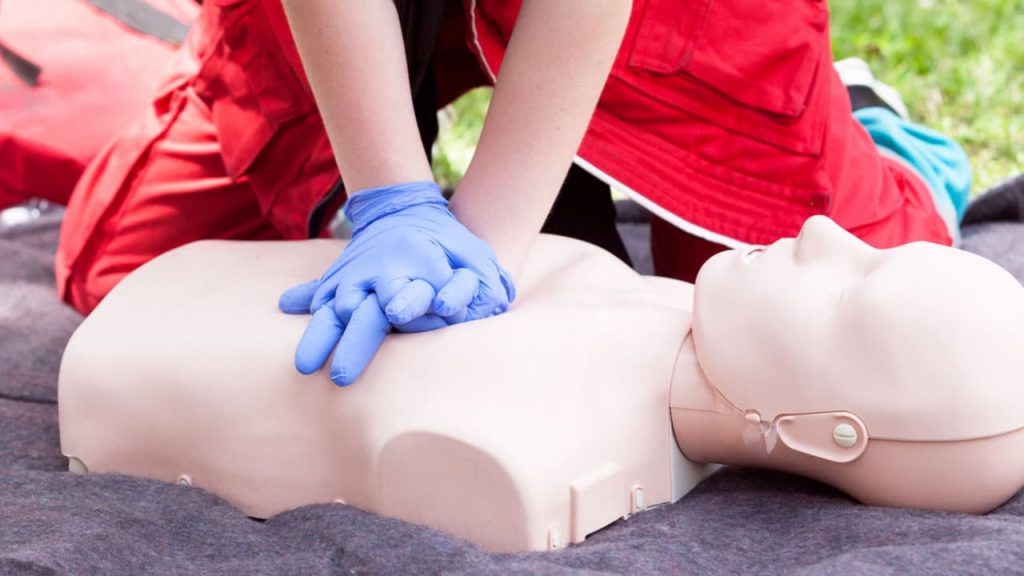Did you know that there are multiple levels of CPR you can learn? That’s right! CPR training includes various levels to choose from, providing you training for specific age groups. But what are the levels and what are the differences? Most people, when asked about CPR will refer to it as part of an emergency medical protocol used in certain situations, and that’s about it.
Furthermore, and sadly, many people don’t really consider taking a CPR training course. Due to this common lack of knowledge about first aid and CPR in general, and because here, at our Mississauga CPR Training facility, we care about human life a great deal, we decided to shed some light on the topic and elaborate on the different levels of Canadian Red Cross CPR courses we have available. What is the difference between CPR levels A, B, C and BLS-HCP?
Check out our Locations for CPR Training
CPR Level A – First Aid for Adults
This is a basic level of CPR and probably the first one you will require to start your CPR training. After completing CPR level A training, you will be able to treat adults only as it only covers how to perform CPR and use an automated external defibrillator (AED) on adults only. This may seem a bit narrow or partial, as far as training goes, but it is still more than enough to treat most conditions that require first aid/CPR either at your home or at work, where most medical emergencies tend to occur.
In fact, many employers send their employees to a level A training to meet Work Safety requirements or simply because they are conscious of the need to be able to respond to medical emergencies in the workplace.
Moreover, many companies allow you to enroll in CPR Level A training through them, footing the bill for you. The CPR level A course contains extremely important, vital information, about treating emergencies. What’s even better – it will take as little as just 4 hours of your time.

Inquire about CPR Training
CPR Level B – First Aid for Children
Upon completing this level of CPR training, you will be specialized and certified for treating infant and child emergencies only, which require a different approach to CPR and AED placement due to differences in their physiology.
CPR Level B also includes instructions on how to use an automated defibrillator on children. It does not include adult treatment methods, and therefore is not a substitute but a supplement to the CPR Level A course. As a result, it is taught to a narrower spectrum of people.
At our Mississauga CPR and First Aid training facility, we believe that every single parent should be knowledgeable in the techniques this important training can teach. CPR level B is a great choice for new parents!

CPR Level C – an All Inclusive Approach
This level of CPR training combines skills from both CPR Level A and Level B courses, thus allowing you to treat both adult and child/infant emergencies. To emphasize the skill level you will attain after completing the CPR Level C course, it is sufficient to say that this is the training level that is taught to police, teachers, lifeguards and more.
There is no argument that all of the above-mentioned professionals absolutely have to be highly skilled in first aid and CPR, as an integral part of their jobs.
CPR Level C is the most popular level of CPR training we provide at Coast2Coast. By completing this course, you can be as skilled as any of the professions listed above! Complete your training in just 6 hours.
Basic Life Support (BLS-HCP) – CPR Level HCP for Healthcare Providers
Our Mississauga CPR training facility makes use of state-of-the-art equipment and provides training by some of the best instructors in the field. CPR HCP has been updated to “Basic Life Support (HCP)” as of April 2019. Upon completion of our Basic Life Support course for healthcare providers, you will be able to address a truly wide range of emergency scenarios such as high-intensity CPR, trauma, opioid overdose and more.
Our Basic Life Support courses are available to physicians, nurses, pharmacists and all the other health care professionals. Oftentimes, students who complete Basic Life Support are also required to complete Standard First Aid.

Understand the Difference Between CPR A, B, C and HCP now?
CPR training is an important life-saving skill to have and is highly recommended for people of all ages to learn. Each level of training provides you with the lifesaving skills required to assist people of various ages.
If you still do not understand the difference between CPR levels A, B, C and HCP, please do not hesitate to ask! Register for a CPR training course to learn these amazing skills. Pick your level and enroll now for a chance to save a life tomorrow!




















1 Comment
This blog about The Difference between CPR Level A, B,
C and HCP is a very useful and I will share it!